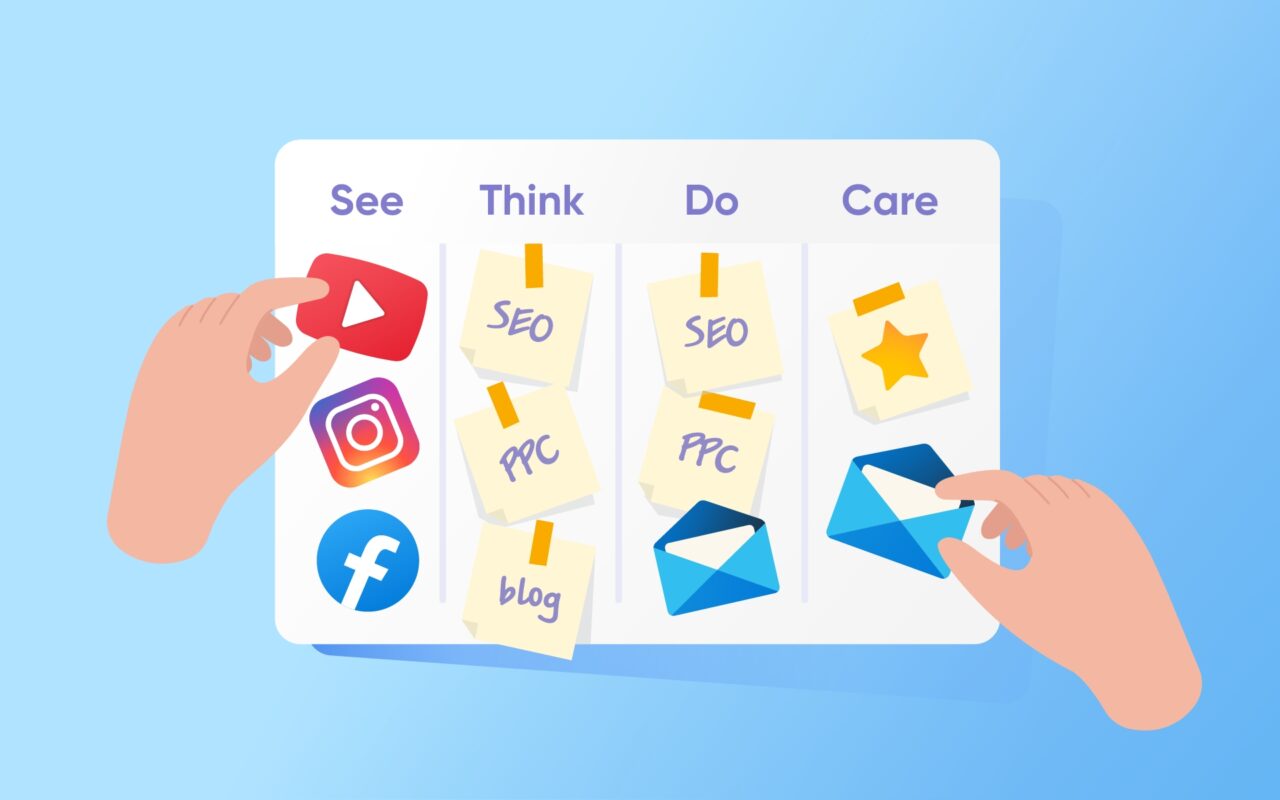Optimize Your Marketing Strategy with the See Think Do Care Framework
Looking to make your advertising more effective? Let's dive into understanding your customer's journey. The See Think Do Care (STDC) framework is a powerful tool for crafting a marketing startegy that mirrors the various stages of the buying process. With STDC, you can identify your customer's current needs and tailor your marketing communication accordingly.

STDC was conceived by Avinash Kaushik during his tenure at Google as a Digital Marketing Evangelist. This framework divides the customer journey into four key stages: See, Think, Do, and Care.
Each of these stages represents a specific moment in the buying process, where customers have distinct needs and motivations. This means that each stage requires a different approach to communication and marketing strategies.
Understanding the specific needs of customers at different stages allows companies to better target their marketing campaigns, provide relevant content, and build strong customer relationships.
Let's delve into each stage and how to approach customers at different stages of the buying process.

Stage See: Engage with All Potential Customers
At the outset of the buying journey, your mission is to catch everyone's eye and leave a lasting impression. It's all about boosting brand awareness.
Take a page from the experts like Red Bull, who've mastered the art of video content creation to build their brand over time. While their approach might not be a one-size-fits-all solution, think about YouTube ads from investment platforms like eToro or National Geographic's social media presence. They show how even newcomers or seasoned magazines can shine globally with the right communication strategy.
The key is to introduce your brand to users in a concise, compelling, and downright irresistible manner, so they'll be drawn to you when it's time to make a purchase. That often means engaging them with entertaining content on social media, through eye-catching banners, or via YouTube ads.
Stage Think: Address Customer Questions and Concerns
In the second stage, potential customers are not yet convinced to buy, but they are starting to consider it. Your goal is to help them realize they need your product or service. So, step up as the expert providing them with all the info they need and highlighting the perks of your solution.
Once potential customers start showing interest in a specific product or service, you can start arming them with knowledge through informative blog posts. Or even consider product video production. Think of travel agencies offering insider tips on dream destinations or e-commerce stores dropping reviews of the latest iPhone on their blog or YouTube channel.
Stage Do: Seal the Deal with Your Customer
If you haven't clinched the deal yet, now's the time to ramp up your efforts. The customer has made up their mind to buy and is scouting for the best option. Your mission? Convince them that you're the one.
PPC ads or email campaigns are powerful tools in this stage, especially for e-commerce stores. They often lure customers with discounts, promotions, or free shipping. This stage is make-or-break for them. Even if the product doesn't differ much, offering the best deal and service is the name of the game.
But this approach isn't just for e-commerce. Whatever your business, make it crystal clear why customers should buy from you now and pair that info with a compelling call to action.
Stage Care: Nurture Your Loyal Customers
We're now in the final stage - Care, which according to Avinash Kaushik, includes customers who have made two or more orders.
It's essential to care for customers who are already convinced of your qualities, as loyal customers naturally bring in more profits. For instance, you can write blog articles for users who have purchased products and maintain regular communication through email campaigns.
Loyal customers also often appreciate establishing customer support. Customer service is precisely what sets Amazon apart from other retailers. While smaller companies may not match Amazon's scale, consistently responding to customer reviews and patiently answering customer queries pays off in the long run.
Conclusion
The See Think Do Care framework helps you understand your customer's needs at every turn of their buying journey.
By integrating this concept into your marketing strategy you can effectively reach your target audience, increase sales, and strengthen customer relationships.
So, focus your efforts in the right direction and consider whether you're giving enough love to your existing customers or focusing enough on potential ones. If adjustments are needed, consider plotting your online marketing strategy using the principles of See Think Do Care.











